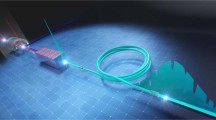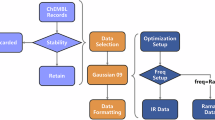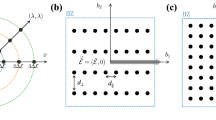Abstract
THE advantages of deriving spectra by Fourier transformation from observations with a Michelson interferometer have been discussed previously1. Another feature, more recently developed, is that spectra covering a wide range can be recorded comparatively rapidly and without the difficulty of grating and filter changes associated with conventional far infra-red instruments. This has now been exploited in studies of benzene derivatives which can have vibrational bands extending throughout the far infra-red region. For these compounds, infra-red measurements in the region below 400 cm−1 are complementary to Raman studies in extending and confirming assignments of the fundamental vibrational frequencies.
This is a preview of subscription content, access via your institution
Access options
Similar content being viewed by others
References
Gebbie, H. A., Advances in Quantum Electronics, 155 (Columbia Univ. Press, 1961).
Green, J. H. S., and Kynaston, W. (to be published).
Mulliken, R. S., J. Chem. Phys., 23, 1997 (1955).
Green, J. H. S., J. Chem. Soc., 2261 (1961).
Pimentel, G. C., and McClellan, A. L., The Hydrogen Bond, 68, 132 (W. H. Freeman and Co., San Francisco, 1960).
Green, J. H. S., Quart. Rev. Chem. Soc., 15, 125 (1961).
Green, J. H. S., Kynaston, W., and Rodley, G. (to be published).
Author information
Authors and Affiliations
Rights and permissions
About this article
Cite this article
GREEN, J., KYNASTON, W. & GEBBIE, H. Far Infra-red Spectroscopy of Benzene Derivatives by Interferometry. Nature 195, 595–596 (1962). https://doi.org/10.1038/195595a0
Issue date:
DOI: https://doi.org/10.1038/195595a0



